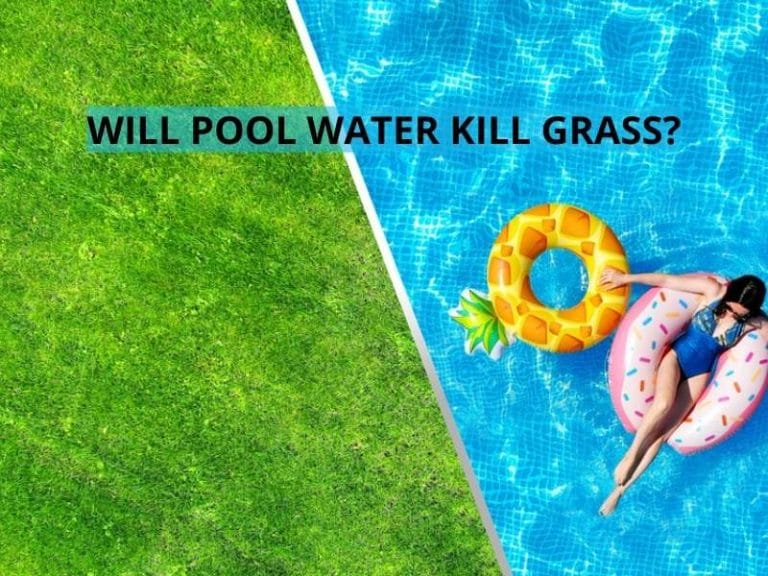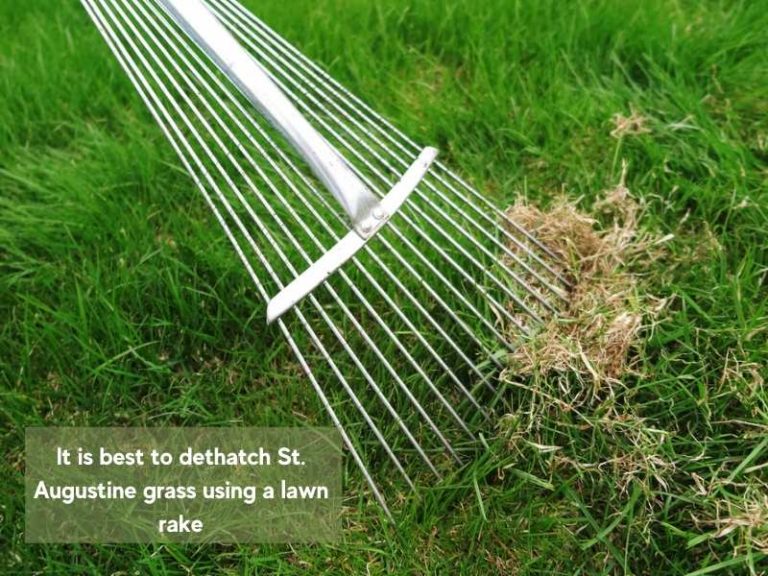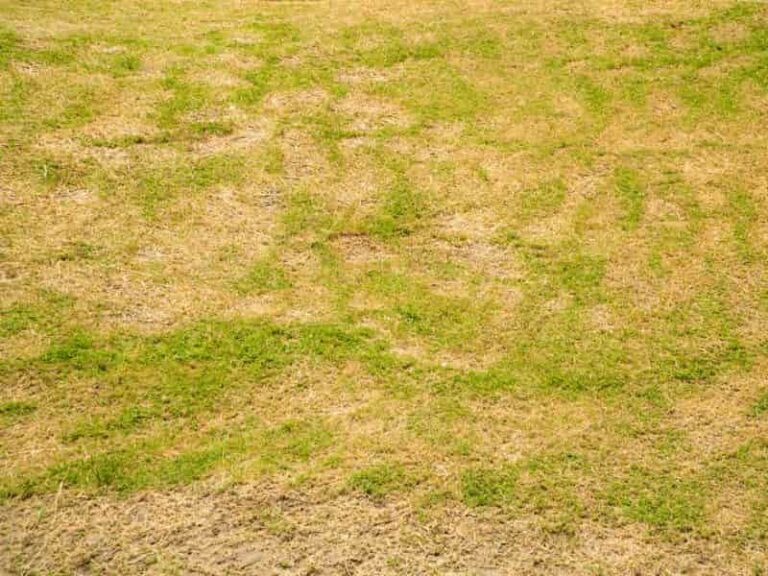Nitrogen vs. Iron for Lawns: Which One Does Your Lawn Need?
Most homeowners often confuse nitrogen deficiency and iron deficiency, as the main sign of both is pale/yellow grass blades. However, nitrogen (a macronutrient) and iron (a micronutrient) serve slightly different roles in turf grasses. Ultimately, you need both of them to keep your turfgrass healthy, dense, and green.
Iron vs. Nitrogen for Lawns – Differences
Grasses need iron to make chlorophyll, which is the green pigment in plant leaves. In turn, chlorophyll facilitates photosynthesis, which is the process by which grass makes its own energy. Therefore, your lawn grass needs iron in order for photosynthesis to take place.
Note: Apart from boosting plant metabolism and making turf grass greener, iron also helps with moss control in lawns, while also making turf grass more resistant to diseases.
Meanwhile, nitrogen is among the three vital macronutrients that grass needs to thrive and stay healthy; with the other two being phosphorus and potassium. This nutrient boosts grass growth by facilitating protein synthesis within the grass blades.
As such, nitrogen is mainly responsible for grass blade/leaf growth; while also being a major contributor towards other areas of turfgrass growth and development, such as the stolons, rhizomes, and roots.
Note: Just like iron, nitrogen also plays a part in the formation of chlorophyll which is needed for photosynthesis to take place.
Best lawn fertilizers with iron and nitrogen
Some fertilizers act as 2-in-1 lawn treatments, as they work to fix both iron deficiencies and nitrogen deficiencies. The best examples of such products include Milorganite, Scott’s Green Max Lawn Food, Simple Lawn Solutions Commercial-Grade Lawn Energizer, and The Anderson’s PGF Balanced 10-10-10 Fertilizer.
Milorganite
- Has an NPK rating of 6-4-0
- Contains at least 2.5% iron, which is almost equal to the amount of nitrogen.
- At least 80% of the nitrogen content is slow-release.
Milorganite is a slow-release fertilizer, which means that it feeds turf grasses with nitrogen and iron when water and temperature conditions are favorable. What’s more, since the nutrients are slowly released over a 10-week period, you don’t have to reapply it often.
Scotts Green Max Lawn Food
- Has an NPK rating of 27-0-2
- Contains 5.17% iron
- Can be applied in the spring, summer, or fall
This nitrogen-heavy fertilizer is guaranteed to speed up the growth and greening of your turfgrass. With a high iron content of 5.17%, this fertilizer will also put your turf on the path towards recovery from iron deficiency.
Simple Lawn Solutions Commercial Grade Lawn Energizer
- Has an NPK rating of 6-0-0
- Contains 5% iron
- Can be applied in all seasons
This fertilizer is a nitrogen and iron blend that will quickly boost the ability of your grass to form chlorophyll and green-up. With an NPK rating of 6-0-0, this fertilizer is best for use on lawns that lack nitrogen but don’t have any other macronutrient deficiencies.
The Andersons PGF Balanced 10-10-10 Fertilizer
- Has an NPK ratio of 10-10-10
- Contains 2% iron
- Best applied in the spring and fall
The Anderson’s PGF-balanced fertilizer is specially formulated to fix nitrogen and iron deficiencies in lawn soil; while promoting faster grass growth and deeper greening. With a balanced NPK rating of 10-10-10, this fertilizer blend is best used on lawns that are deficient in all three macronutrients necessary for healthy turfgrass.
Signs of Iron Deficiency
You can tell that your lawn is lacking in iron when the grass blades start to turn yellow. This kind of grass discoloration due to iron deficiency is referred to as iron chlorosis. Without enough iron in the soil, grass can’t effectively form chlorophyll. Your grass will turn yellow due to iron deficiency.
The yellow-light green discoloration is usually more prominent in the section between the blade veins and starts from the upper section of the grass blades, with the base of the blades retaining a darker shade.
Iron chlorosis also affects new growth first before progressing to the rest of the grass blades. At the advanced stages of iron chlorosis, some of the grass blades may turn white, with dead patches of grass also being a possibility.
Take note that other factors such as nitrogen and potassium deficiency, as well as fungal diseases, may also cause turfgrass to turn yellow. Thus, to be sure that the issue is iron chlorosis, you need to undertake an iron deficiency test. Here are some tests you can try out:
- Test the soil pH – alkaline soil conditions affect the capability of grass roots to effectively absorb iron, thus resulting in chlorosis. If your soil Ph test returns results above 7, then your lawn soil is too alkaline and iron deficiency is the most likely cause of grass yellowing.
- Check the weather conditions – cold weather conditions limits microbial activity, which in turn limits iron uptake.
- Check the light intensity – low light intensity/low sunlight/shaded conditions also minimize the uptake of iron, resulting in grass leaf yellowing.
- Check for soil compaction – poorly aerated soils inhibit effective uptake of iron. To check whether your lawn soil is too compact, insert a stick into the soil and feel for how easy it penetrates into the ground.
Signs of Nitrogen Deficiency
Just like iron deficiency, nitrogen deficiency in turfgrass is typically characterized by the grass blades turning light-green or yellow. However, there are a few notable differences.
For starters, discoloration due to nitrogen deficiency usually starts at the base of the grass blades, before advancing to the newer growth at the top. Second, unlike iron chlorosis that mainly discolors the region between the grass blade veins, nitrogen deficiency affects the blades more evenly.
There are also secondary signs of nitrogen deficiency on turfgrasses. These include stunted growth and increased vulnerability of your turfgrass to lawn diseases. Nitrogen deficiency may also cause your grass to recover much slower from foot traffic wear/injury or damage due to environmental stressors.
To be sure that your lawn is turning yellow due to insufficient nitrogen and rule out other causes of leaf yellowing, you should undertake a nitrogen deficiency test. You can do this using a soil test kit that you can purchase from your local garden supply store. The kit will test and indicate the nitrogen nutrient levels in your lawn soil.
Alternatively, you can seek external nitrogen testing from your local extension office. You’ll simply send them a soil sample and they’ll have the results ready for you within a few days at a fee. Other soil test analyses to determine whether there’s a nitrogen deficiency include prediction of the soil’s nitrogen mineralizable potential and soil nitrate testing.
How to Fix Iron Deficiency in Your Lawn
To effectively fix iron deficiency in your lawn, you should apply a chelated iron fertilizer or an iron oxide fertilizer. Other fixes also include lowering the soil pH and core-aerating the lawn soil to relieve soil compaction.
Apply a chelated iron fertilizer
The fastest and simplest way to fix iron chlorosis in your lawn grass is to apply a chelated iron fertilizer. This kind of fertilizer is water-soluble and typically combines iron with sulfate. By applying just 2 lbs of a chelated iron fertilizer for every acre of yard space, you’ll be successful in treating iron chlorosis and getting your turf grass to look green again.
Common types of chelated iron fertilizers include:
- Ferrous sulfate.
- Ferrous ammonium sulfate.
- Ferric sulfate.
Apply an iron oxide fertilizer
An alternative to chelated iron fertilizers is insoluble iron oxide, which is applied directly to the soil in its concentrated form. Take note, though, that this option only works when the iron deficiency issue occurs in lawns with soil whose pH is 7 or lower, as iron oxide is ineffective in alkaline soils.
Fix the soil ph
While adding iron fertilizers is an effective fix for iron chlorosis in grass, the problem is likely to recur if your lawn soil is alkaline. Soil types with a Ph of 7.5 or more are more prone to iron deficiencies, thus a more permanent fix would be to alter the soil pH.
The most effective way to lower soil pH is to apply an acidifying agent such as elemental sulfur or sulfuric acid to the soil. Remember, while lowering your soil pH, you don’t want to make it too acidic either, as turf grasses thrive at pH of 6.5-7 (slightly acidic-neutral). As such, the amount of granular sulfur you apply should depend on the soil’s level of alkalinity, as detailed below:
- If the soil pH is 8, apply no more than 30 pounds of granular sulfur per 1,000 square feet of lawn area.
- If the soil pH is 7.5, apply no more than 20-pounds of granular sulfur per 1,000 square feet of yard space.
Note: Lawn pH adjustment can be repeated after 90 days, and should be combined with the application of chelated iron fertilizers for faster recovery of lawn grass from iron chlorosis.
Fix soil compaction
For optimal uptake of iron, ensure you relieve soil compaction by aerating your lawn soil. The most effective way to do this is to use a core aerator.
How to Fix Nitrogen Deficiency
The best way to treat nitrogen deficiency in your lawn is to use a slow-release fertilizer that has a high nitrogen content. You’ll also want to restrain from applying excessive nitrogen as this will introduce additional turf issues.
Apply a nitrogen-heavy fertilizer
The best way to treat a nitrogen-deficient lawn is to apply a nitrogen-laden fertilizer. If the soil test result indicated that your lawn lacks nitrogen as well as other essential nutrients, it’s advisable to go for a fertilizer with an NPK rating of 16-4-8. Meanwhile, if nitrogen is the only macronutrient that’s lacking, fertilizer with an NPK ratio of 30-0-0 is recommended.
Note: The NPK rating indicates the ratio of nitrogen, phosphorus, and potassium nutrients in a fertilizer product, respectively. For instance, an NPK ratio of 16-4-8 means the fertilizer contains 16% nitrogen, 4% phosphorus, and 8% potassium.
Avoid applying excessive fertilizer
Remember, too, that while insufficient nitrogen causes grass blade yellowing, excessive nitrogen content in the soil negatively affects grass root development. As such, you should apply no more than one pound of nitrogen fertilizer for every 1000 square feet of yard space.
Note: To find out how much nitrogen your fertilizer has, multiply the total weight by the nitrogen percentage in the NPK rating. For instance, a 60-pound fertilizer bag with a 30-0-0 NPK rating has 18-pounds of nitrogen (60 * (30/100)).
Use a slow-release nitrogen fertilizer
Finally, to avoid adding excessive nitrogen to your soil, use a slow-release nitrogen fertilizer that you won’t have to reapply too often. While a fast-release fertilizer typically requires repeat applications every four weeks for turfgrass recovery, slow-release fertilizers can last for up to eight weeks.




